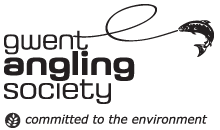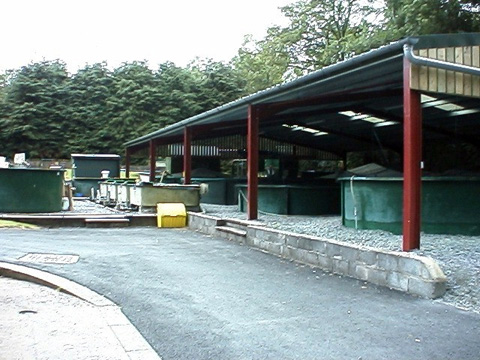
Visit to Cynrig Hatchery
An article by Dr John Taylor.
The Environment Agency has a statutory duty to maintain, develop and improve fisheries. This duty encompasses a wide range of activities including fish stock monitoring, research and development, habitat improvement, fisheries enforcement and general fisheries management, including fish stocking.
The majority of stocking carried out by The Agency is intended either to mitigate for the impacts of major engineering schemes or to restore fish populations following the removal of limiting factors such as impassable barriers, water pollution or habitat degradation.
The hatcheries in Wales are over 90% self-financing since individuals or companies responsible for impacting on salmonid fish populations are required to pay the costs of a stocking scheme.
Cynrig Hatchery, near Brecon, Wales, is situated on the River Cynrig, a tributary of the River Usk three-quarters of a mile from the confluence of the two rivers. It was established in 1965 by the Central Electricity Generating Board to produce salmon smolts as compensation for losses in the River Usk caused by the abstraction of water for cooling purposes by Uskmouth Power Station.
In 1986 the Unit was taken over By Welsh Water Authority and, following the privatisation of the Water Industry, by the National Rivers Authority in September 1989. In 1996 the National Rivers Authority ceased to exist, its duties being superseded by the newly formed Environment Agency who now own and run the Unit.
At present Cynrig rears 50,000 1-year-old salmon and 10,000 2-year-old salmon every year as mitigation for the construction of Cardiff Bay Barrage. Also, 80,000 salmon fry are reared annually to re-generate the industrially degraded Rivers Taff, Ebbw and Rhymney. Part of the rearing strategy for the Taff includes the use of kelt re-conditioning. This involves weaning previously spawned salmon onto the artificial diet and keeping them
Healthy and fit enough to spawn for several more years whilst held in freshwater tanks at the hatchery.
The Environment Agency Wales has two other hatcheries, Mawddach situated at Dolgellau and Maerdy, near Corwen. Mawddach Hatchery was constructed following pollution on the Mawddach from a local gold mine. The restoration efforts on the Mawddach are now complete and so the hatchery rears fish for all over England and Wales. Maerdy hatchery is involved in a mitigation stocking on the River Dee in North Wales, as a compensation for the construction of Celyn Reservoir and the loss of spawning and nursery habitat that this caused.
The Environment Agency hatcheries are essentially similar to commercial fish farms but without the same degree of stock manipulation. As the fish reared on Agency farms are of wild origin then they cannot be grown at the same densities or handled in the same way as fish from selected domesticated-farmed strains.
The hatchery season begins in late October/early November, the start of the natural salmonid spawning season. Adult broodstock is captured from the river which is to be re-stocked by several methods depending upon the facilities available. If present, fish traps are by far the kindest, least damaging method of capture. If local conditions do not support the use of traps then angling or electric fishing can be used. Inevitably though, the latter two methods cause greater damage to fish and can lead to mortality of around 10%.
Broodstock is held in large, deep hatchery tanks until they become ripe, this is usually following a period of very cold weather. Ripe fish are anaesthetised and checked for readiness to release their eggs. If the female’s abdomen is very soft and eggs can be freely expressed then she is stripped. This is a rather crude process involving gentle squeezing of the egg mass down towards the genital vent, releasing the eggs into a bowl. A similar technique is used for the male and sperm is mixed with the eggs, then a small amount of water added to activate the sperm, after about a minute all the eggs should be fertilised.
After the eggs have absorbed water they are counted using a chart based on the total volume produced and size of individual eggs. Eggs are laid into trays 10,000 at a time, the trays are housed in fibreglass troughs which have a constant supply of clean water.
The eggs can be in the hatchery for up to three months depending upon the temperature. Once they hatch, the alevins (or sac fry) have got around two weeks of food supply in the yolk sac before they must be provided with another food source. At the hatcheries, a standard fish farm salmon diet is used which starts off as a very fine powder for the first stage. Survival to hatching is approximately 93-95%
At this stage the fish must be moved into larger tanks and spread out as the amount of waste and uneaten food would pollute the hatching troughs. After about 6-8 weeks the fry will become relatively hardy and possibly strong enough for stocking. Survival to this stage is usually between 75-80%. Conversely, in the wild, the survival to this stage would be less than 5%.
Over the next year, the fish will grow and develop into parr and must be separated into various size classes to avoid the effects of cannibalism and aggressive feeding behaviour.
At 1 year of age, up to 50% of hatchery fish will have reached the smolt stage, ready to migrate to sea. At Cynrig, all smolts and parr are marked in some way to enable them to be identified as adults when they return to spawn. The most common batch marking method is to use a combination of an adipose fin clip (physical marker) and an injection of a tiny micro tag (1mm long piece of coded stainless steel wire inserted into the nose). The use of micro tagging enables information such as migration patterns, exploitation and survival and return rates to be measured.
At present, the survival of hatchery smolts to returning adults on the Taff is likely to be around 2%. Although this sounds low it has to be remembered that the high survival to the juvenile stages means that hatchery production is between 5-10 times more effective at producing returning adults than natural spawning. The survival of juvenile salmonids in the wild is not under genetic control and mostly due to chance, hatcheries simply take away that chance factor by controlling predation and environmental variables. Contrary to popular belief hatchery fish are not missing out on natural selection as their survival or mortality at this stage is overwhelmingly due to being in the right place at the right time and not genetic differences.
Despite the success of stocking if properly planned and managed, there is still room for improvement. The Environment Agency Wales carries out small-scale research projects aimed at improving operational performance and post-stocking survival.
Techniques are being developed that will reduce the amount of domestication in the hatchery environment and increase the opportunities for exposure to more natural life experiences.
Stocking is just one Fishery Management tool but can be used very effectively to protect dwindling stocks, kickstart population recoveries and help to conserve endangered strains. Not all water quality and habitat degradation problems can be solved overnight, stocking is a way of ensuring the continuation of a population until such time as improvements allow it to become self-sustaining.




